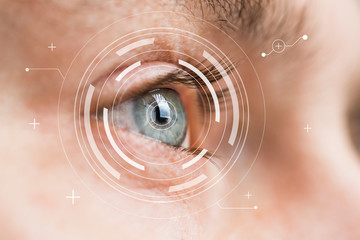
A path to human factors engineering
Nadia Routhier, Senior Human Factors Consultant, Canada shares her journey from studying industrial design into a career in human factors engineering.
16 July 2024
When I embarked on my academic journey, I began studying industrial design, focusing on creating aesthetically pleasing and functional products. As I delved deeper into the field, I realised that the true essence of effective design lies in understanding the end user. A curiosity to better understand this aspect sparked my interest in human factors engineering—a discipline dedicated to designing products that puts the end user at the centre of all design decisions.
I became particularly interested in how different individuals perceive and interact with products or software and the consideration that needs to extend beyond physical attributes to include mental models—how different people think about, as well as use the product. Each user brings a unique perspective, and understanding these differences is crucial for creating intuitive and effective designs.
There has been increasing demand from our customers as they recognise the crucial role human factors play in the success of a project, especially regarding end-user adoption. Additionally, growing regulatory requirements mandate consideration of human factors for safety and habitability. The goal is to create environments that are not just suitable for humans but are comfortable, enjoyable and conducive to high performance.
Currently, I am working with a customer to look at the ergonomics, human performance, error recovery, and overall comfort and satisfaction for the personnel onboard their fleet of vessels. There is a growing understanding within organisations that improving conditions on vessels can enhance retention and performance. The inclusion of Gender-based Analysis Plus (GBA+) and considerations for neurodivergence and other individual needs are part of this broader commitment to creating inclusive and positive work environments.
Over the past 15 years, the landscape of human factors engineering has evolved significantly, particularly with the advent of new technologies. One notable change is the increased focus on GBA+ and intersectionality, concepts that were not prevalent during my early studies. Today, these considerations are integral to understanding diverse user needs and ensuring inclusive design.
Technological advancements have also transformed how we work and collaborate. The rise of remote collaboration tools has presented both opportunities and challenges for human factors engineering. While working remotely can be challenging, it also enables us to engage with a broader range of users and gather diverse insights.
Virtual reality (VR) is another exciting development. VR allows us to create immersive 3D environments where users can interact with products or spaces in a lifelike manner. This capability provides valuable feedback early in the design phase and allows to quickly modify and compare different potential solutions.
Additionally, the tools available for prototyping have greatly expanded making it easier than ever to apply an iterative, user-centred approach. Modern graphical user interface (GUI) design tools enable us to create more sophisticated and interactive prototypes. The availability of 3D printers provides the opportunity to rapidly create, test and improve the physical attributes of products. Eye-tracking software helps us understand where users focus their attention and identify potential areas of confusion or hesitation. Physiological measurement technologies, such as heart rate monitors and pupil dilation sensors, offer insights into users' stress levels and cognitive workload, revealing nuances that might not surface through verbal feedback alone.
Combining quantitative data from these advanced tools with qualitative insights enriches our research and design processes. This holistic approach ensures that our designs are not only based on users' explicit feedback but also on objective data reflecting their real-time interactions and responses.
The integration of these new technologies and methodologies has profoundly impacted human factors engineering, enhancing our ability to create designs that are both user-friendly and innovative. This continuous evolution keeps the field dynamic and drives us to constantly improve and adapt to better serve the diversity of needs.
People typically enter human factors engineering with a master's degree in the field, often preceded by an undergraduate degree in various disciplines such as psychology, kinesiology, mechanical engineering, or industrial design. This diversity in academic backgrounds is common, and many women are notably interested in human factors, resulting in a good gender distribution in the field.
For young people considering a career in human factors, I’d recommend exploring the field through job shadowing or informal interviews with professionals. Gaining a comprehensive understanding of the job's day-to-day responsibilities, job requirements, and necessary soft skills. Engaging in discussions and gathering insights from those already in the field can help determine if the career is a good fit. This approach provides valuable information and a clearer picture of what to expect in the profession.

Nadia Routhier
Senior Human Factors Consultant


"As a human factors engineer, I get to blend creativity with science to design systems that make people's lives easier and safer every day. There's nothing more fulfilling than knowing my work helps bridge the gap between humans and technology."

N/A
Sara Packwood, BMT DEI and Wellbeing Lead discusses diversity in the workplace and why it is essential for innovation, problem-solving and business success.

N/A
Silvia Penkova, Capability Manager - Naval Architecture, based in Victoria, Canada shares her journey in STEM, and testifies to the power of mentorship, resilience, and passion. Her story highlights how support and determination can help break barriers in traditionally male-dominated fields.

N/A
After graduating with a Bachelor of Science, I joined BMT. The diverse projects and global presence really appealed to me as well as the graduate programme on offer. This started with a structured set of modules focused on business and interpersonal skills before progressing to my area, which centred on reliability, obsolescence, safety, and environment. This focus later evolved into asset performance management (APM), where I’m still working today.

Sarah Kenny